
In the quest to build your dream home, the right builder is not just a contractor; they are your partner. It’s essential to ask targeted questions that strip away uncertainty and lay a blueprint for trust and transparency. This guide cuts to the heart of what you need to know, offering you a curated list of the most pertinent questions to ask a builder when building a custom home, ensuring you have all the bases covered for a successful collaboration.
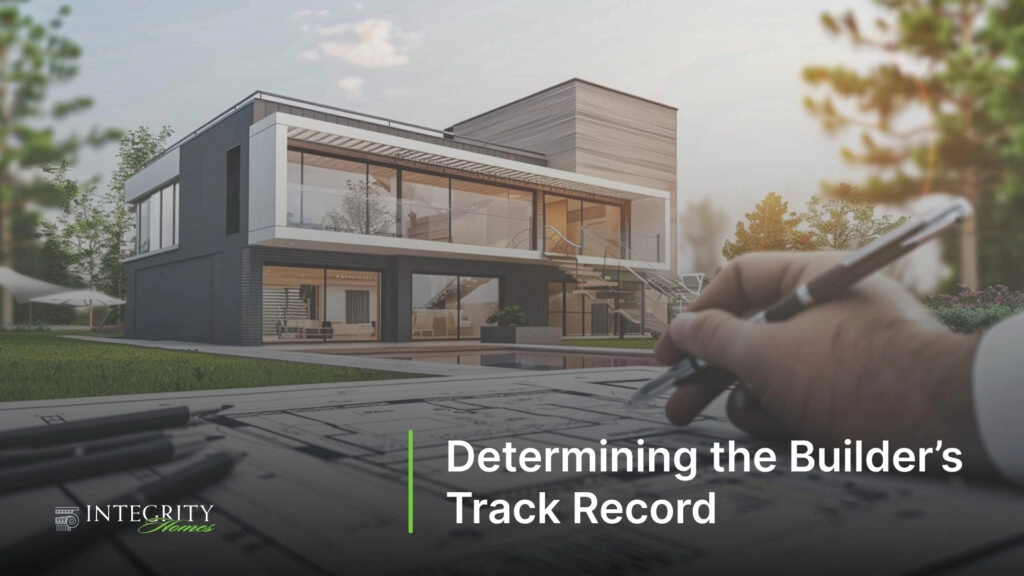
As you set out to construct your custom home, it’s crucial that you start with a strong sense of assurance in your selected home builder. Investigate their background thoroughly. Inquire about their history and breadth of experience in the construction field as well as the variety of projects they have successfully handled. A trustworthy custom home builder will gladly share a record of previous builds, giving you insight into their level of skill and attention to detail.
While examining past work, take the initiative to contact former clients for honest feedback regarding their dealings with the builder. This step is vital not just for confirming the structural integrity delivered by them, but also for evaluating how effectively they manage and complete intricate building endeavors. Confirm if all vendors and subcontractors connected with them are properly licensed and insured, this reflects on professional conduct upheld by the custom home builder along with emphasizing comprehensive concern for proper practice standards in every aspect from safety regulations to legal compliance.
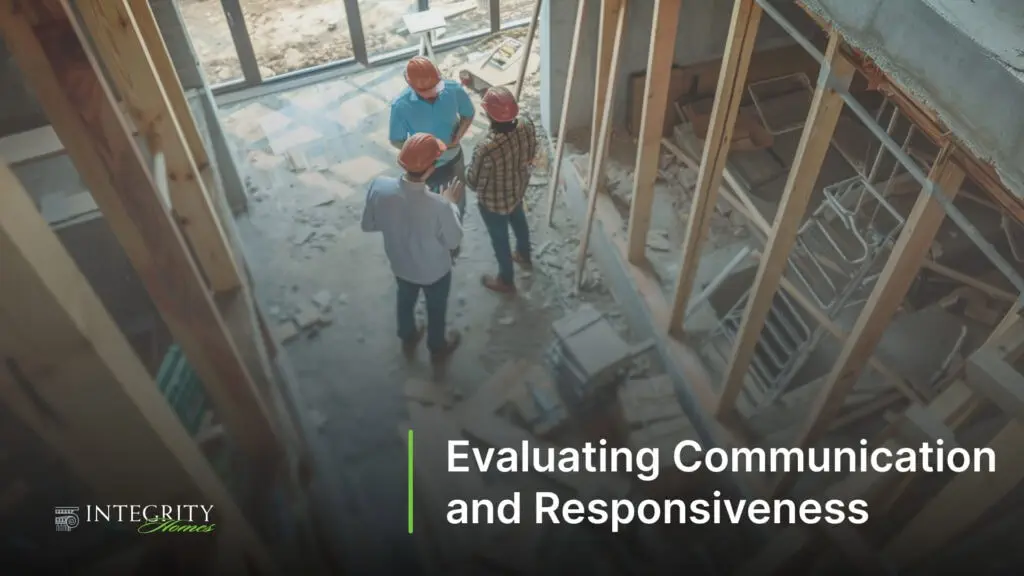
Clear and concise communication is the cornerstone of a successful construction process, acting as both the vehicle for transporting ideas and the supporting structure that facilitates seamless operations. It’s important to discuss with your builder how they communicate effectively. Whether it be through consistent meetings, written reports, or via technological tools—to guarantee meticulous attention to every detail.
Establish what form regular progress updates will take—be that through weekly email summaries or maybe even an application providing real-time tracking of developments. Grasping how your builder harmonizes their team’s efforts is crucial. This includes understanding the transfer of information among all parties involved—from general contractors to architects and subcontractors—ensuring everything aligns perfectly and adheres strictly to schedule.
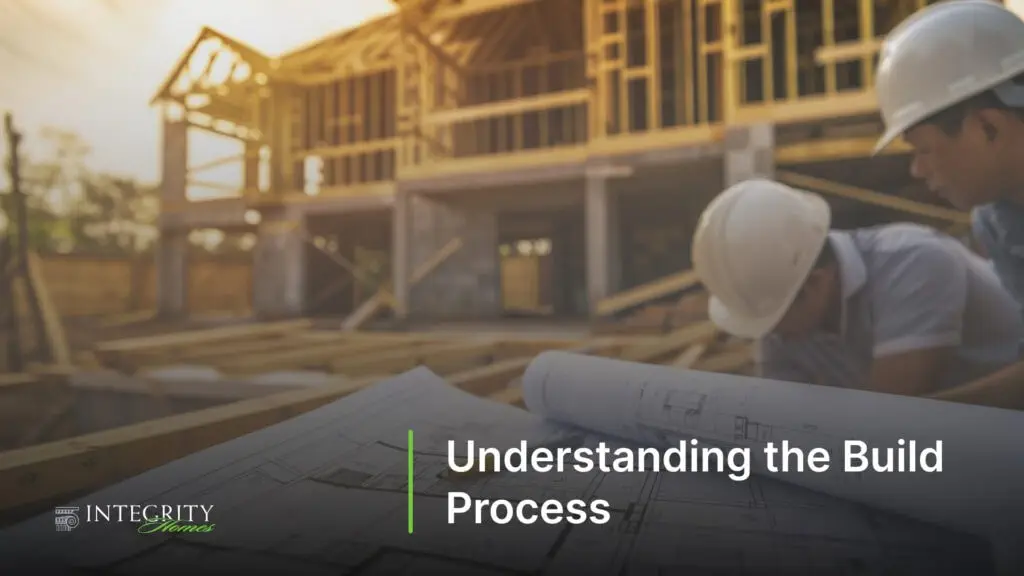
Embarking on the construction of your dream abode is akin to weaving an intricate tapestry from a bare patch of land to the threshold of your new home. Delve into the nuances of the building process beginning with important things to include in your new home design, where you must reconcile your dreams with reality’s practicalities. Consult with your builder regarding their methodical systems and estimation software that ensure seamless progression throughout construction.
The transformation from raw land to a solidly standing structure entails various complex steps, all demanding careful orchestration and constant dialogue among everyone involved. Explore these stages in constructing:
As construction gives rise to both external walls and rooflines, interior spaces also begin taking shape—from insulating walls right through to applying those final strokes of paint within what will soon be called “home”.

Building your dream home involves a complex web of financial considerations, from acquiring the land to selecting those special features that personalize your space. The cost for crafting such a custom home on average begins around $150 per square foot nationally, but bear in mind this figure can rise significantly with specific design preferences and material selections. This intricate dialogue about finances spans far beyond architectural plans to encompass the terrain it rests on, enveloping aspects like permit fees, tax implications, and workforce expenses.
In discussions regarding your budget with your chosen builder, don’t overlook questioning them about any costs associated with loans – these may include various interest rates or transactional fees which could influence the total economic blueprint you are drawing up. It’s also prudent to uncover potential hidden expenditures like homeowners’ association fees or additional warranties. Doing so will provide clarity on what constitutes the final price tag of building your dream residence. Seeking insights into historical hard costs is crucial as they have a bearing on overall expenditure. Gaining perspective from those who’ve walked this path before (previous buyers) allows you gain valuable knowledge for making well-informed choices throughout this venture into creating an abode tailored uniquely to you.
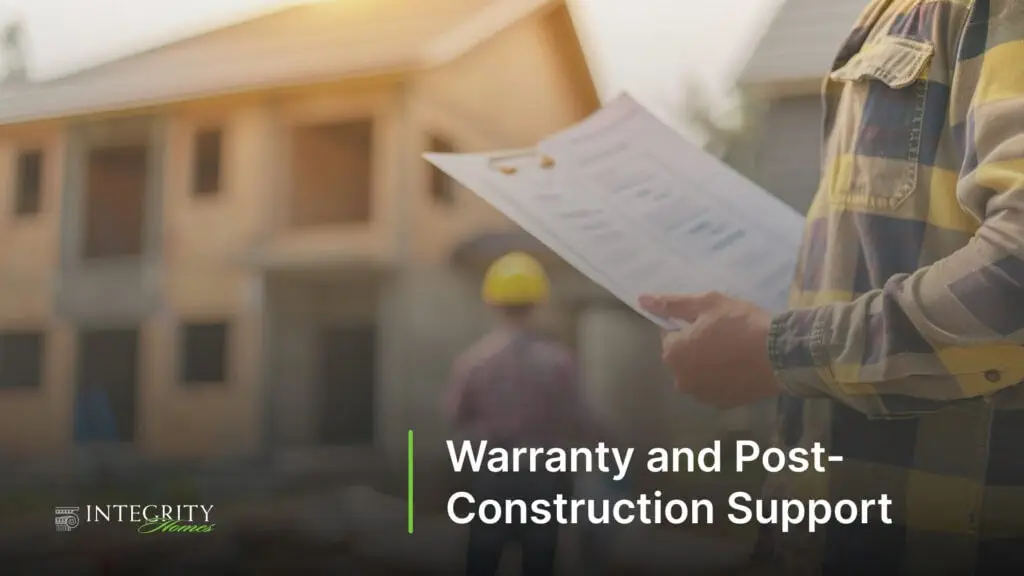
Once the construction dust has cleared, a robust warranty provides the peace of mind required for restful nights in your new abode. Make certain you comprehend both the scope and constraints of your warranty protection to know exactly who to reach out to and what steps to take if it becomes necessary to file a claim.
This is about grasping not only how long your coverage lasts, but also comprehending the obligations you have in upkeeping your home so that the warranty remains effective.
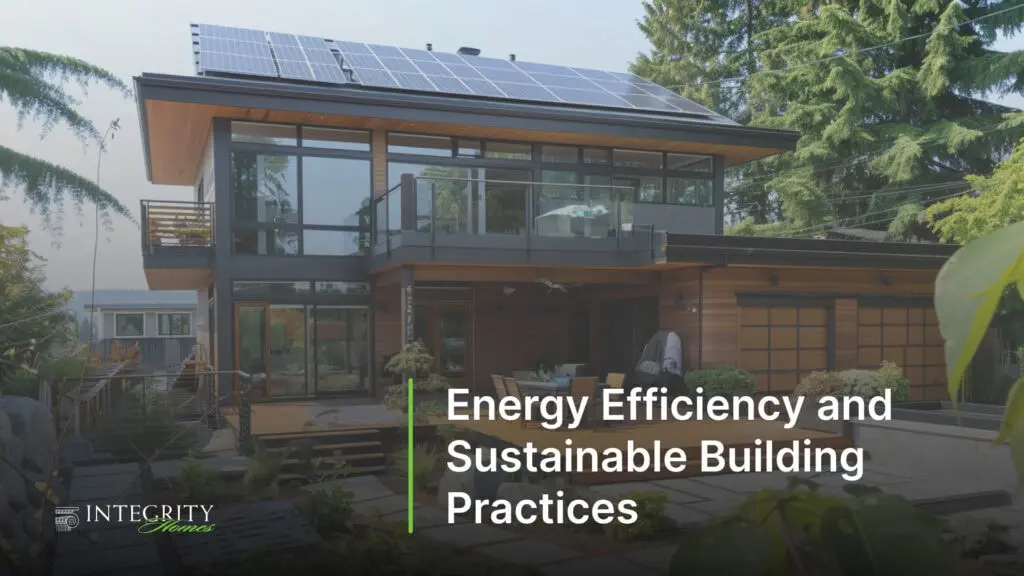
In the era of environmental consciousness, your custom home can be a beacon of sustainability and energy efficiency. Investigate whether your home builders have certifications like Certified Green Professional or LEED AP, signaling a dedication to environmentally friendly building practices. Homes with certifications from organizations like NGBS or LEED come with the assurance of meeting high green standards.
Ask about the HERS rating of their completed energy efficient homes, as a lower score here means higher energy efficiency and potentially significant savings on future utility bills. Discuss the long-term benefits of an energy-efficient home, including reduced costs, enhanced comfort, and the durability of the build. Remember that the location and orientation of your home can impact energy consumption, so consider these factors in the design phase along with incorporating energy saving features.

The appeal of a custom home is found in its bespoke nature, reflecting personal taste and meeting specific lifestyle requirements. Discuss with your custom home builder to what degree you can tailor everything from the structural layout to the final decorative touches. If you are an enthusiast chef, consider adding distinctive kitchen elements such as an integrated pizza oven or exterior culinary area. Engaging several builders allows for each aspect of your residence to be finely honed to your desires.
Comprehend the baseline features included by home builders and their correspondence with current market pricing, along with various possibilities for both enhancing and scaling back – particularly concerning appliances. While interiors encapsulate individuality, don’t forget about landscaping. Though usually beyond a builder’s scope, it offers another opportunity for creative expression on one’s property exterior.
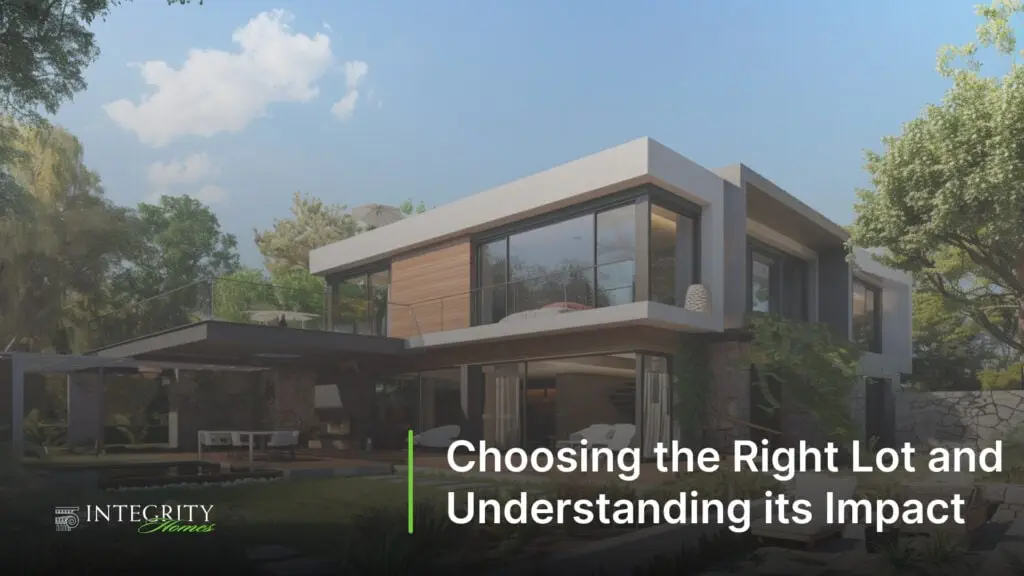
The land your house will occupy plays a vital role in the narrative of its existence, not just serving as scenery. Recognizing the financial and legal details is key—from understanding the expenses related to buying and readying the plot to navigating restrictive covenants that could dictate construction possibilities. The reliability of soil should match that of your building plans. Conducting early tests can help you avoid structural issues later on.
You should also take into account how changes in your community might affect both living there and the eventual market value of your property. If there’s a homeowners’ association (HOA) involved, their regulations may have considerable impact on both interior decisions and exterior appearance. Ensuring that these guidelines are factored into your planning process is critical for achieving harmony between what you envision for your home and what’s permitted by the HOA policies.
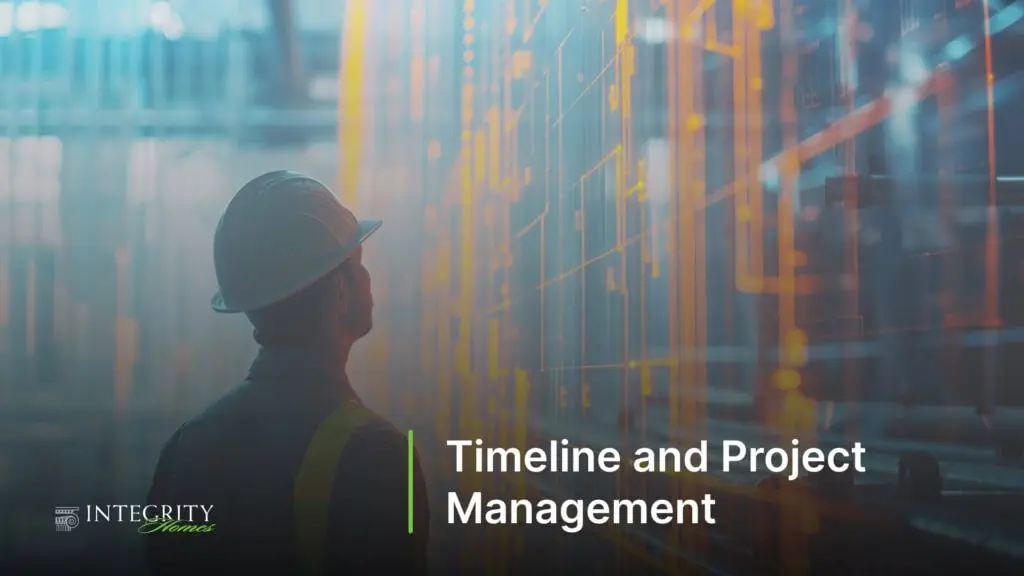
In the intricate process of constructing a home, every phase needs to be meticulously timed and coordinated. It is important to ask for an in-depth timeline of the project so you can keep track of daily and weekly milestones. Discuss with your builder their plans for handling setbacks and unexpected issues such as adverse weather conditions, to understand how they deal with uncertainty.
It’s essential that discussions pertaining to the schedule are recorded in writing. This documentation will serve as a reliable reference point that can help ensure adherence to the agreed-upon timetable throughout the building endeavor.

Prior to completing your project and conducting the final walk through, it’s imperative that you assess the history of performance from previous projects undertaken by the builder. Ensure you obtain references and devote time to inspect finished works as a concrete indicator of their dependability and craftsmanship standards. Make an effort to reach out not only to past customers but also those who have most recently collaborated with them in order, this will help gauge their consistency regarding cost estimates and project timelines when contrasted with other builders.
For Understanding the standing of your builder within industry circles, consider exploring online testimonials from clients. Such digital evaluations can shed light on facets related directly to how they manage both business operations and projects – factors which might otherwise remain obscured without such scrutiny.
As you stand at the threshold of building a custom home, armed with these essential questions, you are now better prepared to select a builder who aligns with your vision and values. Remember that this process is a partnership, one that requires trust, transparency, and a shared commitment to creating a space that is uniquely yours. May your custom home be everything you dream and more, a sanctuary crafted with skill, care, and a touch of magic.
It’s advisable to obtain a project timeline from your builder for more specific details, as the usual process of constructing a home typically spans seven to eight months.
It is important to have a comprehensive grasp of your warranty’s scope, restrictions, and the steps involved in filing claims. You should be fully aware of your maintenance obligations required to ensure its continued validity.
To confirm that the builder you select is committed to environmental sustainability, seek out those who possess designations in green building such as Certified Green Professional or LEED AP. Inquire about their homes’ certifications from entities like NGBS or LEED to verify their dedication to eco-friendly construction practices.
Indeed, when planning your budget, it’s essential to include not only the costs of construction, but also allocate funds for fees associated with loans, dues for homeowners’ associations, and the price of extended warranties.
To assess the performance and dependability of a builder, examine their portfolio of finished projects, request references from former clients, and scrutinize customer reviews found on the internet. This approach offers an in-depth perspective on the builder’s history.
Maryland | Frederick, MD | National Harbor, MD | Potomac, MD
Virginia | Alexandria, VA | Fairfax, VA | Lorton, VA | Northern, VA | Stafford, VA | Stephenson, VA | Winchester, VA | Washington DC